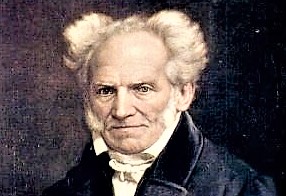Scholasticism
Scholasticism is a school of medieval philosophy or, perhaps more precisely, a learning method which was taught by the academics of medieval universities and cathedrals in the period from the 12th to the 16th century. It was a school that combined logic, metaphysics and semantics into a single discipline, and has helped us to develop our understanding of logic in a meaningful way. The term "scholastic" derives from the Latin word "scholasticus" and from the Greek "scholastikos" which literally means "to dedicate leisure to learning" or "scholar" and the Greek "scholeion" which has the meaning "school". The term "scholars" is also commonly used to describe scholastics.

Related topics
Eleatic school, Miletus school
What is scholasticism?
It is a current of teaching that was the result of the union of theological thought and philosophical thought that sought to understand and give an explanation about the supernatural revelations that Christianity had.
About Scholasticism
We can say that the scholasticism is a tool and a method of learning based on dialectical reasoning and is aimed at answering a series of questions or resolving contradictions. It consisted, in other words, of a current of philosophy that sought the way to relate and integrate reason with faith in the best possible way but giving greater importance to faith.
It was a philosophical current that sought to find comprehensible answers to all the doubts that arose with regard to reason and faith, mainly because for scholastics the human being is the image of God, and for this reason, the scholastic school relied on dialectics, logic, ethics, theology, cosmology, metaphysics and psychology.
History
The development and history of scholastics coincided with the foundation of universities at the end of the 12th century and of religious orders such as Dominicans and Franciscans at the beginning of the 13th century. In universities, Aristotle’s recently translated texts provided the basis for a system of thought known as Aristotelianism. In addition, religious orders had their favorite doctors, whose teachings were also systematized. A characteristic of medieval universities were the public disputes in which the doctors of these schools debated before the student body. Although their systems were different, the discourse was made possible by the participants’ confidence in Aristotle’s method of logic.
Geographically, scholasticism developed in Italy and the Iberian Peninsula, in France, Germany, the Netherlands and the British Isles. The main schools were the University of Oxford, distinguished by philosophy, the University of Paris, by theology, and the University of Bologna, by law and medicine.
Characteristics
The main characteristics of scholasticism are the following:
- Its objective was to integrate the knowledge that was right.
- The scholastics believed in the harmony between reason and faith.
- Philosophy can help theology to explain the mysteries and revelations of faith so that they are understandable to reason.
- It was used as a didactic method to explain and teach scholastics.
- The topics were treated with great care and dedication using reading and public discussion.
- Christianity used it as a tool to understand faith.
- Thomas Aquinas was its greatest representative.
- Aristotle was accepted as a greater thinker than Plato.
Scholasticism and education
In educational scholastics, the teacher and the student interact around the discussion that arises from the “quaestiones disputatae”. Scholasticism was the most important current in the schools and universities of Europe in the Middle Ages, to find an orderly system of the natural knowledge of Greece and Rome and the religious knowledge of Christianity.
Some of the didactic procedures used in the universities of the Middle Ages were lectio, collatio, gloss, opinion, dialogue, dialectical discussion, disputed questions, the use of logic, demonstration, discussion and public debate. Debate was used as an educational tool to stimulate, test and communicate the progress of thought in the area of philosophy and theology.
Revelation and reason in form were important for the scholastics.
with which they affirmed that God was the source of knowledge and truth.
Contributions to economy
Some of the scholasticism contributions to the economy were:
- The creation of feudal economy was characterized mainly by agriculture.
- The division of serfs, landowners, royalty and clergy.
- There was the contractual relationship in which the father inherited the land from his son.
- The fiefdoms were an economic and politically independent unit.
- They managed to set rules for economic behavior in a way that was consistent with the doctrines of religion.
Importance of Scholasticism
The scholasticism was in charge of proposing Christian doctrines within a rigid education of Christianity, where the most important and relevant concern was faith and reason. It was a way of working in an intellectual way, in which all thought was subject to the principle of authority ,and teaching was limited to the Bible as the main source of knowledge.
Representatives
The main representatives of the scholasticism are the following:
- Saint Thomas Aquinas
- Canterbury Inselm
- Pedro Aberlardo
- Roscelino
- Roberto Grosseteste
- Alejandro Hales
- Rogerio Bacon
- Saint Albert the Great
- Juan Duns Scotus
- William of Ockham
Works
The main works related to and based on scholasticism were:
- De Divisione Naturae (About the division of Nature)
- A treatise on the Trinity.
- Historia Calamitatum (History of Misadventures)
- The destruction of destruction.
How to cite this article?
Briceño V., Gabriela. (2019). Scholasticism. Recovered on 3 January, 2025, de Euston96: https://www.euston96.com/en/scholasticism/









